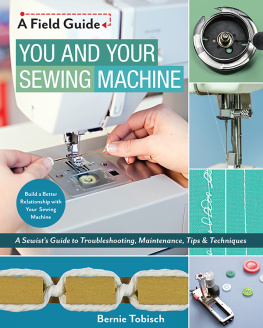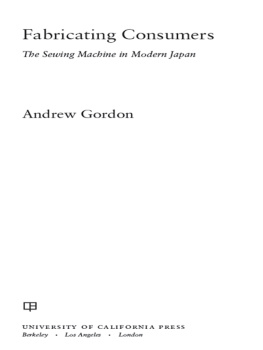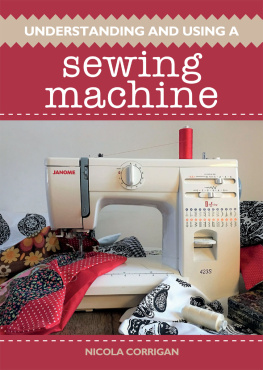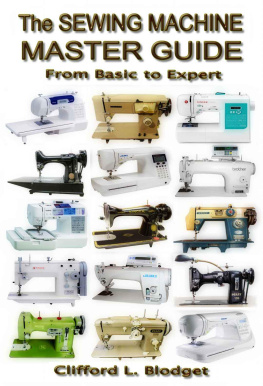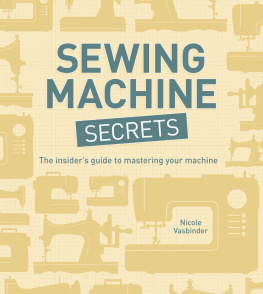Publisher: Amy Marson
Creative Director: Gailen Runge
Acquisitions Editor: Roxane Cerda
Managing Editor: Liz Aneloski
Editor: Lynn Koolish
Technical Editor: Debbie Rodgers
Cover/Book Designer: April Mostek
Production Coordinator: Tim Manibusan
Production Editor: Alice Mace Nakanishi
Photo Assistant: Mai Yong Vang
Photography by Bernie Tobisch, unless otherwise noted below
Style photography by Lucy Glover and Mai Yong Vang
Published by C&T Publishing, Inc., P.O. Box 1456, Lafayette, CA 94549
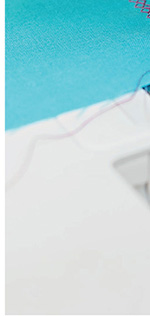
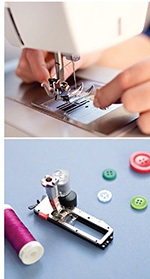
Acknowledgments
I would like to thank my wife, Shelley, who has been there through thick and thin. Its not easy living and working with someone, and she has managed to stick with me. Her patience, her enthusiasm, her work ethic, and her rose-colored goggles have been an immeasurable help to me. Im looking forward to the next twenty years of adventure!
Thank you also to our great clientele. You have become family, and I appreciate your support more than I can say!
To all the shop owners with whom its been my pleasure to work, thank you.
Last but definitely not least, to Glen Zoerb, who hired me into this business and taught me a thing or two, my heartfelt thanks!
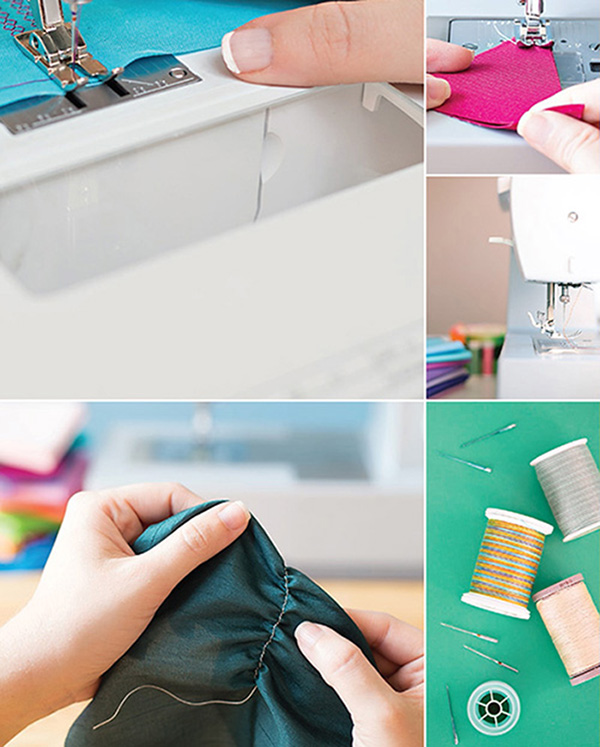
INTRODUCTION
I have been a sewing machine technician for 42 years and have enjoyed every minute of it. I couldnt have found a better career to match my personality and skill set. I have had the opportunity to work on every kind of sewing machine from 200-needle mattress quilters to the latest household computerized embroidery machines.
For the last 20 years, my focus has been on household machines. Along with my wife, Shelley, I have taught many hundreds of classes. She teaches the techniques, and I relate them to the sewing machine. This has worked very well and has been a lot of fun for us.
Over the years, I have come to understand and appreciate that most sewists have a very strong relationship with their sewing machine. The connection is not like one with a toaster, microwave oven, or dishwasher. This is much more personal. Ive heard it said that in a fire, the sewing machine would be the first item to be saved. I have seen this relationship be the source of much joy and the cause of many tears.
In our many classes, I have started to see myself as somewhat of a relationship counselor and always do my best to reestablish trust and understanding. But at times where there were irreconcilable differences between sewist and machine, I have also had to facilitate separation and divorce.
My goal with this book is to help you gain a better understanding of your sewing machineits needs and what it is trying to communicate to you.
I hope that this new understanding will allow you and your machine to become best friends. I have tried to include enough styles of sewing machine so you find one that is similar to yours; but as always, the manual that came with your machine should be the final authority. If you dont have a manual, many manufacturers have downloads available from their websites.
HOW TO USE THIS BOOK
This book is divided into three sections:
Getting to Know Your Sewing Machine
Take a look at Sewing Systems and Hook Types to identify what type of sewing system your machine hasknowing this will allow you to apply specific information and advice about your particular type of sewing machine.
Look through the rest of this section for information about sewing machine features.
Maintaining Your Good Relationship
Refer to this section when you have questions about the best sewing machine foot to use in specific sewing situations.
Read through Cleaning and Lubricating to see what maintenance you should be performing regularly on your machine.
Take a look at Other Maintenance to see what applies to your machine(s).
Problems and How to Fix Them
This section will help you address problems that occur as you are using your machine.
The Troubleshooting Guide is a great reference and will refer you to appropriate information in the book to address specific common problems.
GETTING TO
KNOW YOUR
SEWING MACHINE
Knowing your machine can be the difference between a happy experience or a frustrating one. This section will help you understand how things work, and that knowledge will allow you to focus more on your project and less on problems and issues with the sewing machine.
MACHINE FEATURES

Sewing machines range from wonderfully simplethe old Singer Featherweights, for exampleto the new high-tech computerized models. Regardless of the type of machine you have, the basic sewing functionality is the same: The needle takes the top thread down below the needle plate, where the hook grabs it and takes it around the bobbin thread. That creates the stitch. The feed dogs transport and release the fabric to give an even stitch length. This chapter focuses on the mechanisms that perform these functions.
How a Stitch Is Formed
The following photos use enlarged mock-ups of the needle, thread, and fabric to clearly show how stitches are formed on a sewing machine.

Threaded sewing machine needle
When the needle pushes down through fabric, it takes with it a certain amount of thread. As the needle comes back up, the thread is pinched between the back of the needle and the fabric. This creates a loop above the eye.
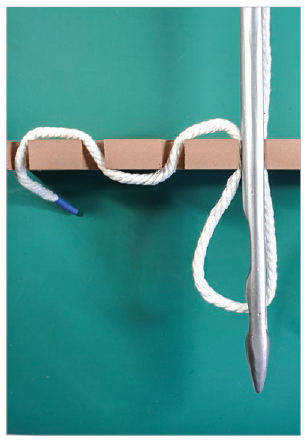
Loop formed
When the needle comes back up 22.5mm, the tip of the hook grabs this loop. As the top thread is pulled around the bobbin case, the take-up lever pulls the excess thread back up and snugly into the fabric. In the photo, my finger takes the place of the tip of the hook.

Hook grabbing top thread loop
Sewing Systems and Hook Types
The sewing system that creates the stitches is the combination of the hook and bobbin case, and there are many designs. (The hook is the metal part that revolves around the bobbin case. It is responsible for picking the thread up from the back of the needle and pulling it over the top of the bobbin to form a knot with the bobbin thread.)
Manufacturers have their signature styles. Below are the popular versions. One should look like yours. Look at the photos and make a note of which type of sewing system your machine has for future reference and troubleshooting.
For more information on bobbin cases, see Damage to the Bobbin Case.
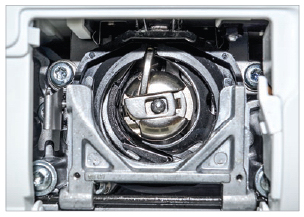
Oscillating or CB system with hook and bobbin case
Next page



